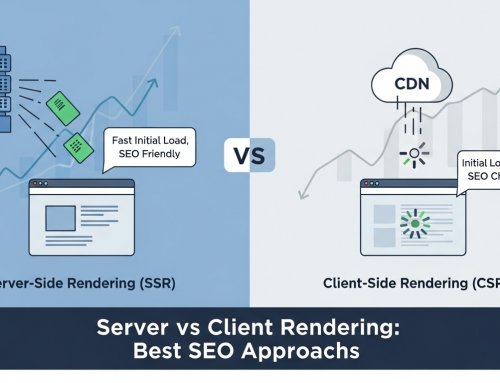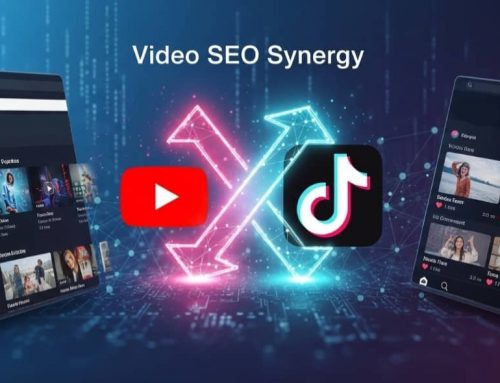Search Engine Optimization (SEO) is an evolving profession that keeps up with the changing digital scene. Sustaining a competitive advantage and attaining top search engine results require staying abreast of the most recent advancements and trends. A number of new developments in technology and trends are expected to completely change the way SEO is used and treated in 2024. The biggest SEO developments and trends for 2019 will be covered in this blog post, along with how they may affect your digital marketing plan.
1. AI and Machine Learning Integration
Machine learning and artificial intelligence (AI) are having a bigger impact on SEO. Thanks to these technologies, search engines can now provide more individualized search results and have a better understanding of user intent.
- Enhanced Keyword Research: By analyzing enormous volumes of data, artificial intelligence (AI)-powered systems might find keyword opportunities that conventional approaches would miss. Artificial intelligence is being used by tools like SEMrush and Ahrefs to recommend keywords that are more likely to generate traffic.
- Content Creation and Optimization: By proposing pertinent subjects, organizing content, and even producing language, machine learning algorithms can assist in the creation and optimization of content. High-quality content can be produced with the use of tools like GPT-4 that are optimized for search engines.
- Performance Analysis: Artificial intelligence (AI) can offer more in-depth understanding of the operation of your website by seeing patterns and trends that can guide your SEO approach. You may anticipate shifts in search trends with the use of predictive analytics, and then modify your approach appropriately.
Using these technologies can greatly improve your SEO efforts and increase the effectiveness and efficiency of your methods.
2. Voice Search Optimization
Voice search is becoming a big part of SEO with the rise of voice-activated gadgets and virtual assistants. Conversational and natural language search inquiries are becoming more and more popular. In order to maximize for voice search, take into account these tactics:
- Long-Tail Keywords: Pay attention to long-tail keywords and expressions that resemble spoken language. For instance, think about “What are the best SEO practices for 2024” rather than optimizing for “best SEO practices.”
- Content Based on Questions: Provide content that responds to frequently asked queries from your target audience. Make use of forms such as how-to guides or FAQs to give clear, succinct responses.
- Brief Responses: To increase your chances of showing up in voice search results, make sure your content offers succinct and understandable replies. For easy scanning, use numbered lists and bullet points in your information.
By making your website voice search-friendly, you can draw in more and more users who would rather speak than type their inquiries.
3. User Experience (UX) and Core Web Vitals
User experience and Core Web Vitals—metrics pertaining to website loading speed, interaction, and visual stability—are becoming increasingly important to search engines. Your search engine rankings will rise as a result of these improvements, which will also increase visitor satisfaction and engagement. Here are some pointers:
- Page Loading Speed: To speed up loading times, reduce JavaScript, use browser cache, and optimize pictures. Use resources like as Google PageSpeed Insights to pinpoint areas that require enhancement.
- Interactivity: Make sure your website is interactive and responsive to offer a consistent user experience on all platforms. Make use of JavaScript and CSS frameworks that increase interactivity without slowing down.
- Visual Stability: Use fixed dimensions for media and prevent content shifts during loading to avoid layout shifts that can irritate users. Make sure that photos and advertisements don’t change the layout.
Your search engine rankings will rise as a result of these improvements, which will also increase visitor satisfaction and engagement.
4. E-A-T and Content Quality
Search engines utilize the E-A-T (expertise, authority, and trustworthiness) criteria to assess the quality of content. An authoritative, high-quality piece of user-generated content is essential for SEO performance. This is how to concentrate on E-A-T:
- Demonstrate Expertise: Show Off Your Credentials and Content Expertise to Show Off Your Expertise. Provide author biographies that highlight your background and credentials.
- Develop Trust: To gain the trust of your audience, use reliable sources and appropriately credit them. Make sure the material you provide is current and fact-checked.
- Comprehensive Information: Provide substantial, well-researched content that fully addresses the inquiries of your readers. Incorporate statistics, case studies, and authentic instances to enhance the depth of your writing.
You may increase the credibility of your content and increase the likelihood that it will rank well in search engine results by concentrating on E-A-T.
5. Visual Search and Image Optimization
Users can conduct image-based searches for information instead of text-based ones thanks to visual search technologies. It’s critical to optimize your photographs for search engines as visual search grows in popularity. The following are some tactics:
- Use descriptive file names: Give your photographs names that are both obvious and evocative. For instance, use “blue-running-shoes.jpg” in place of “IMG1234.jpg.”
- Alt Text: To aid search engines in deciphering the substance of your photographs, include thorough alt text. Naturally incorporate pertinent terms.
- Structured Data: To add more context to your photographs, use structured data. You may increase the visibility of your photographs in search results by implementing schema markup.
Enhancing the visibility of your photographs in image search results can increase website traffic.
6. Mobile-First Indexing
Search engines give preference to indexing and ranking your website’s mobile version when using mobile-first indexing. It’s imperative that your website be responsive to mobile devices. To optimize for mobile-first indexing, follow these steps:
- Responsive Design: Make sure your website is responsive and functions properly on all devices by using responsive design. To guarantee a consistent experience, test your website across a range of screen sizes.
- Quick Loading Speeds: Make sure your website loads quickly on mobile devices. Utilize AMP (Accelerated Mobile Pages), compress images, and speed up server response times.
- Easy navigating: To improve the mobile user experience, make navigating simpler. Make sure that buttons and links are simple to click on small screens, and maintain a clear and user-friendly menu structure.
Having a mobile-friendly website guarantees that consumers on mobile devices have a good experience in addition to increasing your search engine rankings.
7. Video SEO and Engagement
Video content is becoming more and more popular and is important for search engine optimization. You can boost the visibility of your videos and improve website traffic by optimizing them for search engines. Think about these tactics:
- Relevant Keywords: Use pertinent keywords in the tags, titles, and descriptions of your videos. Find out what terms people are searching for, then organically incorporate those terms.
- Engaging Content: Interesting Content Produce captivating, high-quality video content to promote user engagement and sharing. To keep people interested, use calls to action that are obvious, narration, and graphics.
- Captions and transcripts: Transcripts and captions should be included for better SEO and accessibility. Transcripts and captions provide text that search engines may index, improving the searchability of your movies.
You can increase your total SEO efforts by utilizing the increasing popularity of video content by concentrating on video SEO.
8. Featured Snippets and Zero-Click Searches
Search engines are trying to deliver rapid answers straight on the search results page, which is why featured snippets and zero-click searches are becoming more popular. In order to maximize for these attributes:
- Respond Straight to Inquiries: Write material that succinctly and clearly responds to particular queries. Make your responses stand out by utilizing headings and bullet points.
- Structured Data: To make your material easier for search engines to interpret and increase the likelihood that it will show up in highlighted snippets, use structured data markup.
- Improve for Regional Searches: For your company to show up in local search results and zero-click searches, make sure all of the information about it is correct and consistent across web directories.
You can get greater exposure and traffic by optimizing for zero-click searches and featured snippets.
9. Social Media Integration
Social media’s ability to increase interaction and drive traffic can have a big impact on your SEO efforts. How to include social media in your SEO plan is as follows:
- Shareable Content: Produce material that is simple to distribute across social media networks. Make use of compelling headlines, eye-catching images, and obvious calls to action.
- Social Signals: To increase the visibility and credibility of your material, promote social sharing and interaction. Your search rankings may be indirectly impacted by social signals.
- Cross-Promotion: Promote the information on your website and increase traffic by using your social media accounts. When posting on social media, make sure to include links to your blog entries, videos, and other information.
Including social media into your SEO plan can improve your website’s traffic and online exposure.
Conclusion
Keeping up with the most recent advancements and trends in SEO is crucial to the success of any digital marketing campaign. You may improve user experience, boost SEO efforts, and rank higher in search results by adjusting to these new trends. Your long-term success will depend on your ability to continuously learn and adapt as the SEO landscape changes. Put these tactics into practice to keep your website at the top of search engine results and to stay one step ahead of the competition.






